Evening primrose is also known as German rampion, evening star, common evening primrose, field primrose, wild four o’clock, king’s cure-all, coffee plant, night willowherb, fever plant, scabbish, and scurvish. It is a highly beneficial and adorable yellow flower opening at night, well-known by a seductive lemon scent. You can eat its young leaves, roots, blossoms, but you should leave seeds to birds.
I like this beautiful flower originating in North America. It is tall from 15 to 25 inches (38 – 63.5 cm), but sometimes it can reach 40 inches (1 m) in height as well. Believe it or not, this winter annual often grows on railway tracks or roadsides like weeds. Since it spreads quickly, you should think carefully if this self-seeding plant is the right choice for you. If yes, try to find an efficient way to keep it under control.
Benefits of Evening Primrose
Native Americans used Evening primrose for treating bruises, minor wounds, sore throats, asthma, and gastrointestinal problems. Also, peppery-tasting roots were an efficient remedy for treating hemorrhoids.
In Europe, people used this plant to alleviate symptoms of whooping cough (pertussis) and neuralgia. Nowadays, this herb is used as a remedy for medical conditions such as:
- Respiratory diseases
- Pertussis
- Asthma
- Digestive problems
- Rheumatic disorders
Benefits of Evening Primrose Oil
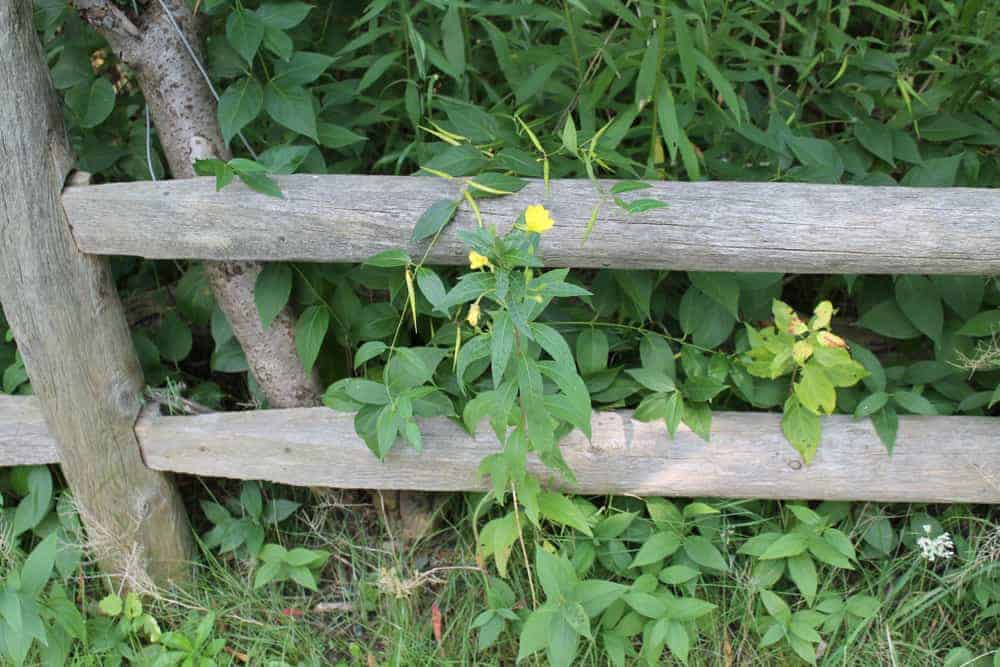
- Cardiovascular conditions – Regular using Evening primrose oil will regulate blood pressure thanks to the high content of the gamma-linolenic acid. Also, it may help patients with pro-thrombotic states.
- Immune system – The gamma-linolenic acid from this oil helps the immune system to function well.
- Autoimmune diseases – To some extent, the oil of this flower may alleviate the symptoms of ulcerative colitis, rheumatoid arthritis, multiple sclerosis, and Sjögren’s syndrome.
- Osteoporosis – The mix of Evening primrose oil, calcium, and fish oil may increase bone density and reduce the loss of bone cells in older adults who have an issue with osteoporosis.
- Eczema (Atopic dermatitis) – Keep in mind that, when taken orally, oil won’t effectively relieve the symptoms of this condition. However, you should try to apply it directly to the skin.
- Women’s health – Evening primrose oil may help women in the case of PMS, endometriosis, and mastalgia.
- Psychiatric conditions – Since this plant is a sedative, applying oil may help patients with schizophrenia, dementia as well as the hyperactive children.
- Nerve damage – Diabetes often causes nerve damage. The results of some research show that taking this oil daily for up to a year may help in alleviating this issue.
- Dyslexia – This oil improves mental performance in children suffering dyslexia.
- Dyspraxia – Taking Evening a mix of primrose oil, vitamin E, and thyme oil may improve the condition of children with this problem.
- Dry eyes – Taking Evening primrose oil improves symptoms of dry eye in people using contacts if taken daily for half a year.
- Obesity – Taking this oil four times a day helps obese adults to lose weight in a year.
- Alcoholism – There are indications that Evening primrose oil may help the alcoholic people.
Toxicity of Evening Primrose
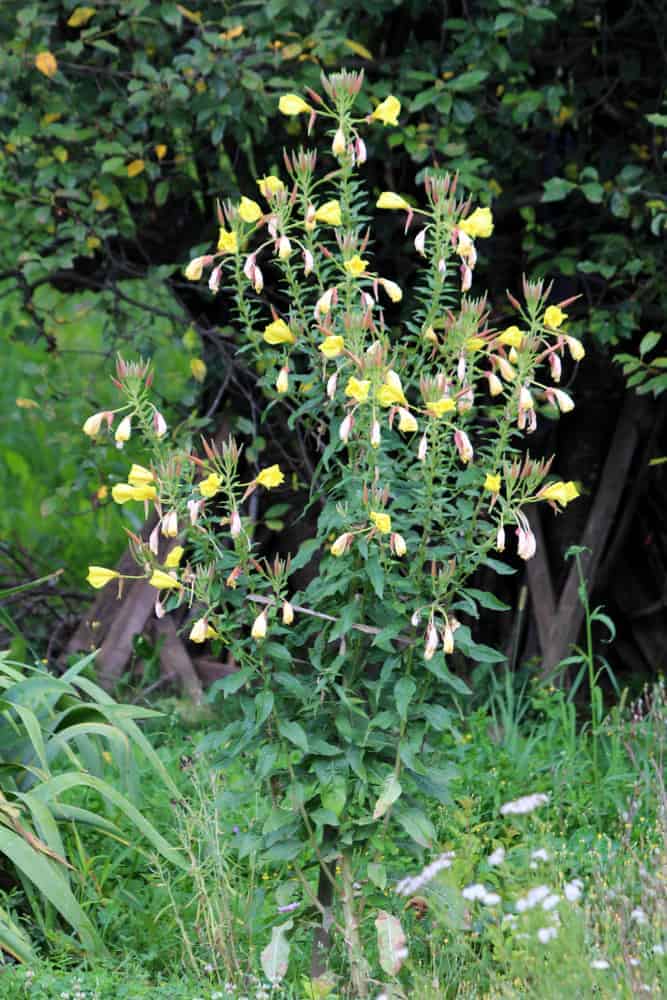
For most people, Evening primrose oil is entirely safe if taken for a short period. After a while, some issues such as a headache and stomach upset may occur in some people.
Also, you should be careful during pregnancy because this oil may increase the risk of complications and bleeding. This plant is contraindicated for patients suffering epilepsy and schizophrenia as well because it may cause seizures.
However, for most of us, this oil is edible, and you can use it in salads or to make tea. I also like adding flowers to pickles or make some specialties with the fried roots of this plant.
Negative Interactions
Be careful with the application of Evening primrose oil if you take some medicines because of possible interactions.
- Anticoagulants – Don’t combine these drugs with Evening primrose oil, because it increases the risk of bleeding.
- Phenothiazines – In combination, this medication for treating emotional and mental disorders and Evening primrose oil will probably increase the risk of seizures.
- Lopinavir and ritonavir – Evening primrose oil will slow down the speed of breaking down this anti-HIV cure in the body. Therefore, it is not recommended to use them at the same time.
- Surgery – The oil may increase bleeding during the surgery and immediately after the procedure. Prevent this issue by stopping using it two weeks before the surgery.
Favorite Evening primrose varieties |
|||
|
Variety |
Flower color | Bloom time | Height |
| Lemon Sunset Evening primrose | Yellow flowers | Throughout summer |
24 to 36 inches (61 – 91.5 cm) |
|
Glowing Magenta Evening primrose |
Hot-pink flowers | Throughout summer | 12 inches
(30.5 cm) |
| Siskiyou Pink Evening primrose | Clear pink flowers | From summer through fall |
10 to 12 inches (25 – 30.5 cm) |
|
Twilight Evening primrose |
Bright pink | From summer through fall |
12 inches (30.5 cm) |
How to Plant Evening Primrose in Your Garden
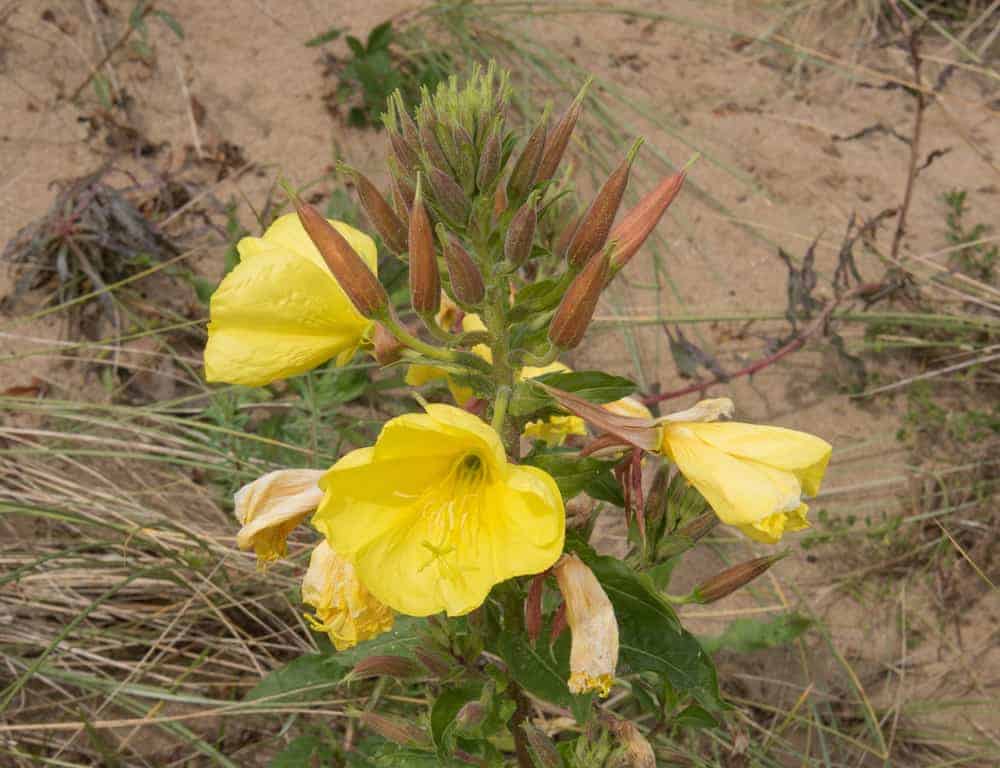
Propagation by seeds
If you have a plan to sow seeds in a pot and want to see flowers the first year after planting, you should do it in late winter. On the other hand, you can also sow seeds early in spring.
That means that you can start it indoors first and transplant seedlings in your garden at the appropriate time. The third and most convenient option is to buy the plants and avoid sowing seeds. However, it’s up to you.
When you decide to do the entire job by yourself, you should purchase packets of seeds first. It is not a big deal since most of the local garden stores sell them. Plus, you can order them online as well.
Sowing seeds outdoors
When you decide to plant Evening primrose in spring, you should start after the last frost. Seeds will need the average temperatures from 65 to 70 F (18 – 21 C) to germinate appropriately.
Place them into the mixture of soil, sand, and peat moss, approximately 0.5 to 1 inch (1.3 – 2.5 cm) deep. Mulch the area lightly and water it abundantly.
Seeds will germinate in two weeks. To allow the proper development of the young plants, you should space them at least 5 to 6 inches (13 – 15 cm) apart.
Sowing seeds indoors
If you prefer sowing seeds indoors, you should start at least ten weeks before the last spring frost in the region where you live. Place seeds into the pot, wait for them to germinate, and place the pot with seedlings to the sunny windowsill.
After your seedlings reach a few inches, you should transplant them in the garden. Plant them 6 inches (15 cm) deep and up to 15 inches (38 cm) apart. Try to take seedlings with as much the original soil as possible. That way, you will protect their root system.
Basically, this sounds simple, but my experience says that Evening primrose seedlings don’t react well to transplanting. Too often, you will be disappointed because moving young plants from the pot to your garden won’t be successful.
How to Care Evening Primrose in Your Garden
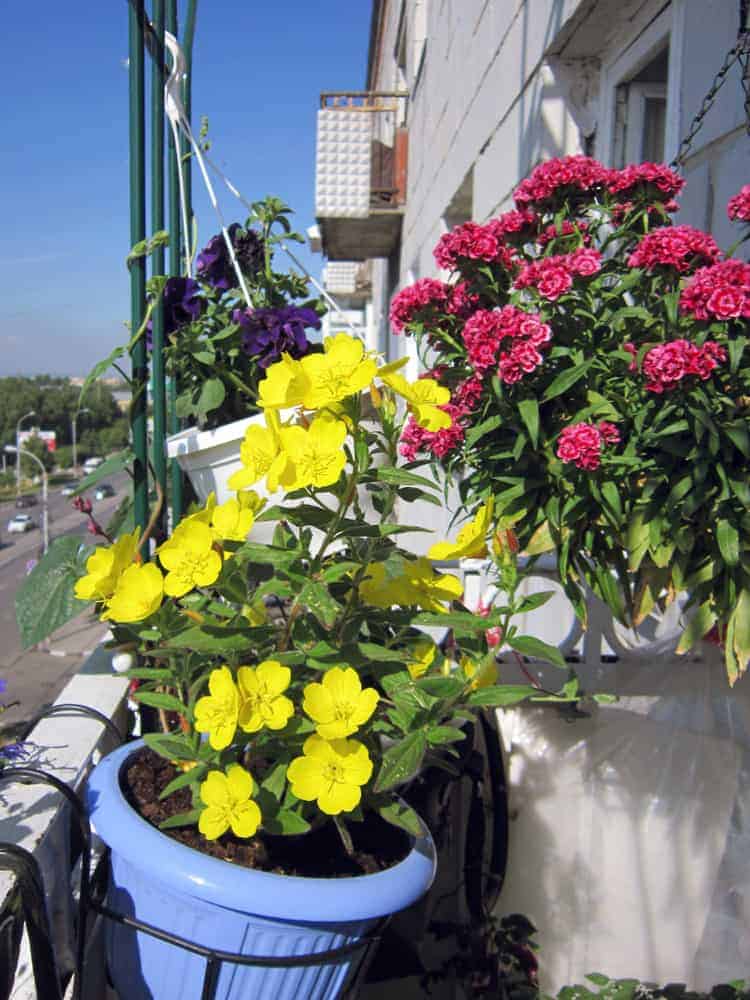
Space
Provide at least 5 to 15 inches (13 – 38 cm) of space between your flowers to let them grow healthy and vigorous.
Soil
It grows best in well-drained, moderately fertile ground, but it will tolerate even poor soil when the pH is in the range from 5.5 to 7. Regardless of whether you plant this flower in the sand, clays, gravelly, caliche, rocky, or loam ground, your flower will thrive if you add some compost.
Light
Evening primrose prefers growing in full sun and just tolerates partial shade. However, if you want your plant to flourish abundantly, you need to provide at least six hours of direct sunlight daily.
The best options are locations facing south or west. That way, your flower will get enough light necessary for lush growth. Whenever possible, avoid entirely shaded areas where your plant can’t survive.
Temperatures
Once established, almost all varieties can withstand high temperatures and arid conditions.
Watering
Your Evening primrose requires regular watering until establishing. Also, you should pay attention to your plant once planting it in the garden. Water it frequently from the very beginning. On average, it will probably be enough doing it once in two or three days.
However, try to add water more often if you notice that the ground becomes dry. On the other hand, take care to avoid overwatering because this flower can’t stand soggy soil. Fortunately, most varieties are tolerant to drought after adapting to the environment.
Fertilizing
Since Evening primrose is not a heavy feeder, it is enough to fertilize it once a year. The best time for that activity is spring. That way, you will give your plant an excellent start.
Mulching
If you live in the region with a hot and dry climate, you should add a thick layer of mulch around your flower. After spreading around with a garden rake, mulch will keep the ground consistently moist.
Pruning
Since Evening primrose spreads wildly, you should keep it under control. Regularly deadhead the excess buds and faded blooms to avoid self-seeding. Also, always prune your plant to the ground level and throw away all the stems after blooming.
That way, you will prevent the uncontrolled spreading and also help your plant remain healthy and vigorous. On the other hand, if you plan to let your flower spreading, it will be enough not to prune the buds.
Also, it will be wise to keep your Evening primrose away from the other potted flowers. In most cases, this flower will overtake the root systems of any other plant in the pot.
Evening Primrose Pests and Diseases
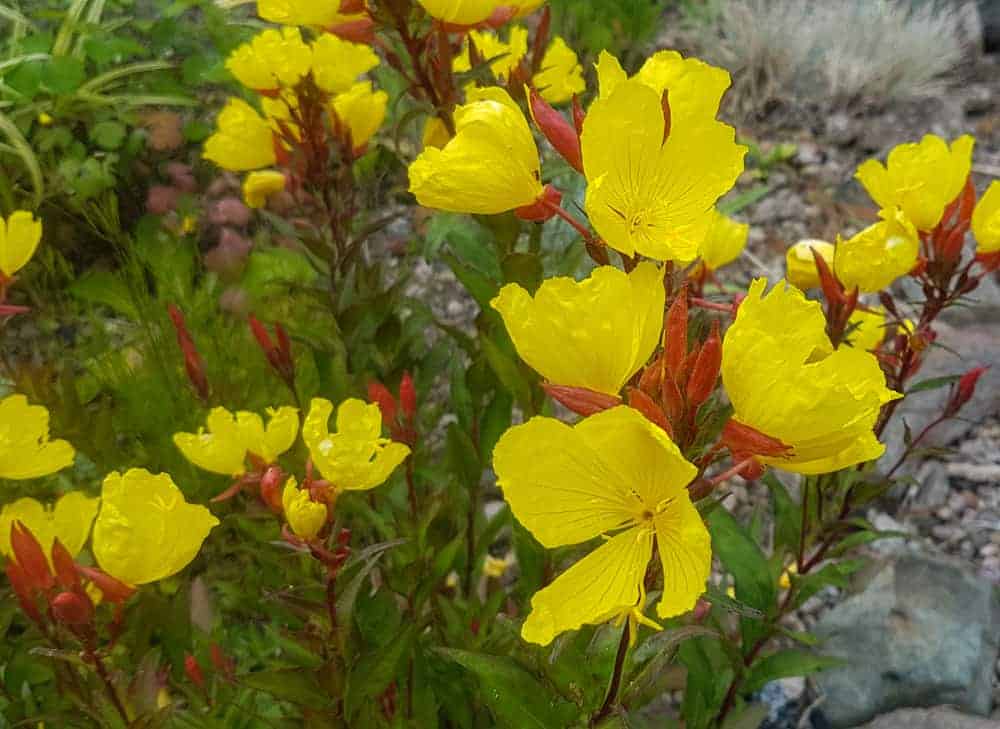
Evening primrose is almost free of pests and diseases. In rare situations, gardeners had an issue with leaf spot and powdery mildew.
Leaf spot
This is a fungal disease causing the occurrence of brown to black, uniform, water-soaked marks on leaves. The result is withering and dropping the foliage and consequential death of the plant.
Prevent this condition by proper watering, and avoid sprinkling the foliage. Also, provide adequate airflow by appropriate spacing of your plants.
Once fungi appear, you should treat your Evening primrose with adequate preparations containing copper octanoate or sulfur. If you prefer the natural way, try to spray affected plants with a mild solution of 0.5 tsp of baking soda per 1 gallon (3.8 l) of water.
Powdery mildew
You will recognize this fungal disease as soon as it occurs. Honestly, it is a real nightmare for most gardeners throughout the US. At the very beginning, you will notice dust-like deposits on leaves. Over time, light-white or gray marks will start appearing on the foliage, stems, and flowers.
In the beginning, this fungus is not fatal to your flower, but it will make it ugly and unattractive. However, left untreated, fungi will feed on leaves and eventually cause their withering and death.
Help your plant by improving airflow and cut its infected parts. Milk spray can be quite useful as prevention. Make it with 60% water and 40% milk, and spray the plant by using a backpack sprayer.
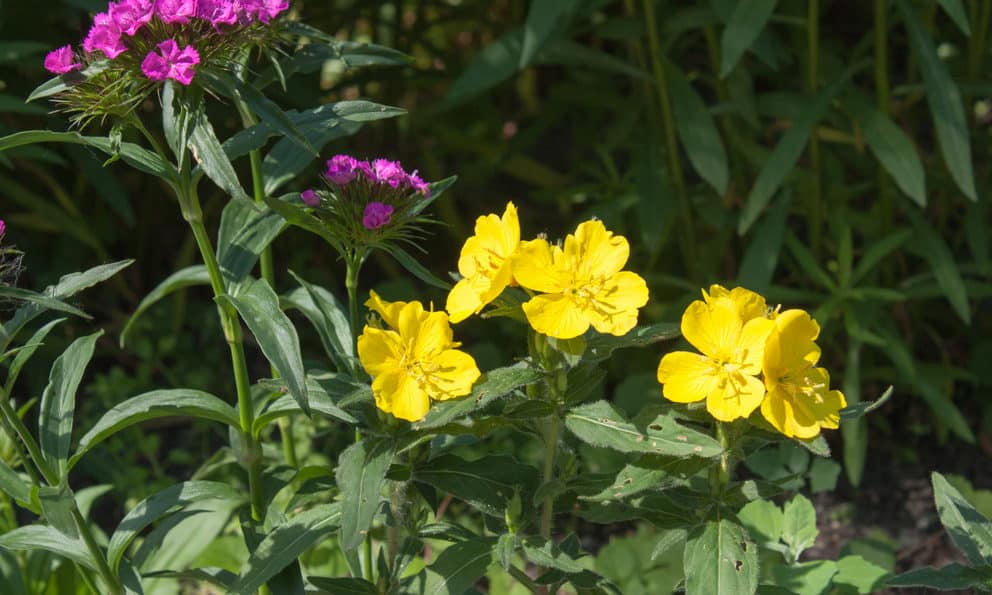
Leave a comment